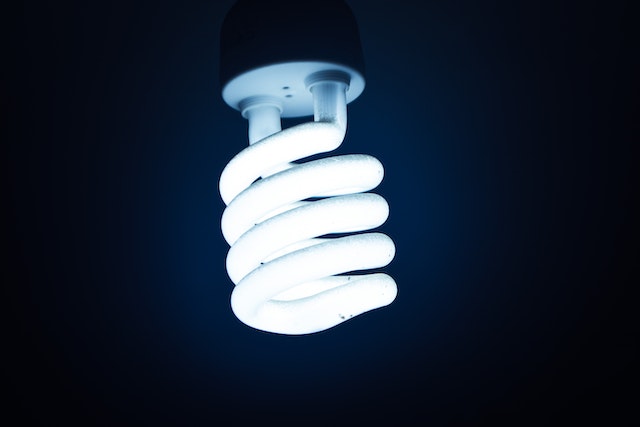
How do LED lights produce different colors? By using different materials that produce light at different wavelengths.
LED stands for Light Emitting Diode and they are very different to regular light bulbs. A lightbulb produces light by passing an electric current through a very thin metal filament. This filament has to have a very high level of resistance and a very high melting point. Tungsten is usually used because it satisfies both of these requirements. When an electric current is passed through something, electrons move between the atoms. Some of these electrons collide with the atoms and generate heat. The more resistance something has, the more likely the electrons are to collide with atoms and the more heat is generated. That is why the metal also has to have a high melting point. The filament heats up and produces light. Lightbulbs like this don’t last for an incredibly long time because the filament degrades as it is heated. These lightbulbs are also not very efficient because 10% of the electric power produces light and the other 90% produces heat.
LEDs are far more efficient and last many times longer than regular lightbulbs. LEDs can turn 70% of their energy into light. This also means that they don’t get as hot as lightbulbs.
The idea behind the LED, electroluminescence, was discovered in 1907. Electroluminescence is where a material emits light when an electric current is passed through it and not because of heat. The LED was patented in 1962, but they were extremely expensive. It was only after the 1970s, when it became possible to mass produce semiconductors more cheaply that the price dropped.
An LED has two sides. One side is called the p-type and the other side is called the n-type. The p-type area has electron holes. That means there are atoms which are lacking electrons. On the n-type area there are lots of electrons. When a current is applied to the diode, the electrons rush to the electron holes. When an electron falls into an electron hole it releases energy in the form of a light photon. LEDs convert electricity directly to light without going through the heat stage, which is why they are far more efficient. When you switch off the current, the electrons go back to where they were before.
So, how do LED lights produce different colors? We know that different colors have different wavelengths. Blue has a wavelength of 450 nm and red has a wavelength of 620 nm. The different wavelength is produced by varying the level of energy that is released by the electron. A low level of energy creates a long wavelength (red) and a high level of energy produces a short wavelength (blue). The manufacturers use different materials that conduct electricity at different rates to produce the different wavelengths.
The first LED lights produced were red, not white. This is because you need less energy to produce red and it is easier to do. It was made using a semiconductor made of aluminium gallium indium phosphide. Blue was only produced in 1972. It was made using gallium nitride mixed with zinc. These days it is mixed with magnesium. By changing the electric current or altering the materials that are mixed, almost any color can be created.
White LED lights were the last to be made. White can be produced in three different ways. You can make white by using a blue, green, and red LED. If you mix red, green, and blue, you get white. You can make white by coating an LED in a chemical that produces white light, such as phosphorous. You can make white by mixing a blue LED with a yellow LED. Our eyes see that light as white.
When LEDs were first invented, they were very expensive, but the price has come down over time. Now, they are fairly cheap, and much more efficient than incandescent light bulbs. They also last much longer. The average light bulb that heats up metal to make heat and light will last for about 1,000 hours. They are cheap, but they don’t last long, and they are hugely inefficient. An LED light can last for 25,000 hours at least. Some LEDs have been tested to last past 100,000 hours. They may be expensive to buy at first, but they last longer, and they save on the electricity bill. More than that, they are better for the environment.
So, how do LED lights produce different colors? By using different materials so that the electrons give off more energy which can be converted into light. And this is what I learned today.
Source
https://www.rohm.com/electronics-basics/leds/what-are-leds
https://byjus.com/physics/light-emitting-diode/
https://en.wikipedia.org/wiki/Light-emitting_diode
https://en.wikipedia.org/wiki/Electron_hole
https://electronics.howstuffworks.com/led.htm
https://www.colorkinetics.com/global/learn/what-is-an-led
https://www.lrc.rpi.edu/programs/nlpip/lightinganswers/led/color.asp
